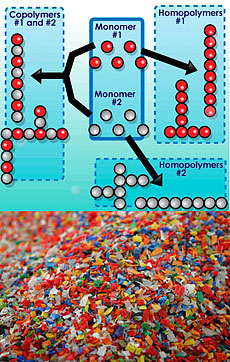Plastics Restoration
by Rich Fogel #45
 What are the two most difficult and time consuming jobs to do on your restoration?... I will give you a hint, wheels and plastic restoration. What are the two most difficult and time consuming jobs to do on your restoration?... I will give you a hint, wheels and plastic restoration.
Today we will deal with plastic, the wheels I will look at in a future issue of MR.
Plastic can be tackled with more then one option. The easiest way, and one that can end this article right here is to go out and buy NOS parts if you can find them, $$$$$. Or you can buy for some bikes reproductions of varying degrees of quality. For a race bike, almost any repo part will work out OK if you are not that picky. But, for that garage queen, do some homework as there is more then one company producing repo plastic for certain bikes. Some bikes, you will have no choice other then one company. And if you do not like the finish or quality of their product, what can you do? Plastic restoration.
Plastic restoration. Huh, you say. How can this work? For this to work, you need to start out with a solid part with no cracks or chunks missing. Also, some plastic can turn too brittle for this work. Sun faded, white chalk like (oxidation) and just dull will work out just fine.
I found that sandpaper and a great deal of patience is the best way to restore plastics.
Initial cleaning (inside and out) with hot soapy water, scrub brushes and scotch brite.
Razor blade to scrape off any heavy oxidation. BE CAREFUL. If there is no oxidation, skip this step. I use a blade from a box cutter with the tips you can break off for a new cutting edge. They are about 3 to 4 inches long and are quite flexible. I hold the blade at a 45 degree angle and pull lightly across the surface "shaving" as little plastic as possible so I do not do more damage then good.
There are two ways to do the rough shaping and take out the deepest scratches. One is by sanding the other is to use a straight edge razor blade and scrape at a 45 degree angle to the plastic. Depending on how deep the gouges are and the piece you are working on, you may use one or both during your project.
I started using an orbital vibrating sander. Don't use a belt sander. Well unless you want to have a big pile of plastic dust!
I first sanded the plastic with 100 grit sandpaper, then graduated to 220 and then to 320 with the sander.
Every once in a while wipe the sanding dust off the tank and tap it off the sandpaper. If you let the dust build up on the sand paper the dust will put additional scratches into the plastic while you're sanding.
Use care when sanding plastic. Sand a little at a time, sand with the contours of the plastic and use light pressure on the sander. Your goal here is to remove only enough material to remove the deep gouges and scratches.
You want to have a smooth overall finish when you are done with the 320 grit paper. Yes there will still be sanding marks, but no big scratches.
Now it is time to hand sand using finer grit sandpaper. At this stage I used a rubber sanding block with wet/dry 400 grit sandpaper and water with a small amount of dish washing liquid. The block helps to avoid uneven sanding marks caused by fingers and the dish wash liquid helps lubricate the sandpaper.
The cleaner you keep the sandpaper the less time it will take. Change the water often to remove all the grit and sanding dust. Again this ensures that you will not add scratches as you work.
 Graduate to finer paper as the tank gets smoother. I started using 400 then 600, 800, 1000 and 1500 grit papers. When you get to this point you will probably see scratches that you want to fix. You decide the amount of time that you want to invest in your plastics. Graduate to finer paper as the tank gets smoother. I started using 400 then 600, 800, 1000 and 1500 grit papers. When you get to this point you will probably see scratches that you want to fix. You decide the amount of time that you want to invest in your plastics.
After all the sanding you will have a dull matt finish on the tank, the next step is to polish it.
I use Gel-Gloss polish on the plastics. I tried a few others but this one works the best. I use my drill with a 6 inch buffer wheel from Sears. Use caution because the edge of the buffer can leave deep marks if it hits the plastic at speed. It will take more time to fix these little marks.
You can find Gel-Gloss at Home Depot and other hardware stores.
This process is very labor intensive. This is not a 30 minute project. Plan on spending at least 5 hours to finish.
I need to thank a few people for the information I have shared here with you.
Bret Bohan for his thoughts and ideas that mirrored some of mine when I first started plastic restoration. Eric Johnson for a couple of tricks, and last but not least, John Nicolas for his upgrading the process a touch and some of his words describing the actual process, changed where I deemed necessary.
***
|